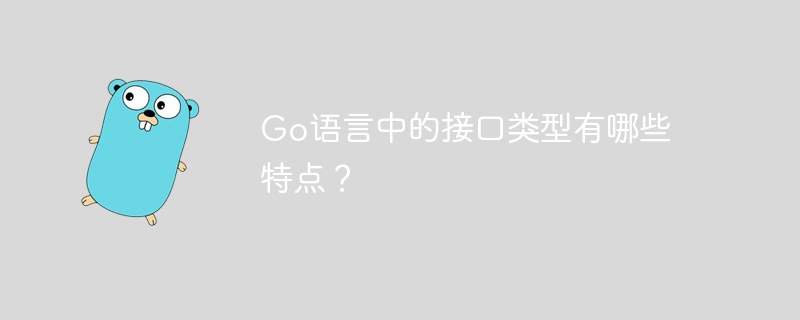

The interface type in the Go language is a very flexible and powerful feature that can help developers achieve polymorphism and code reuse. Interface types are widely used in the Go language and have the following characteristics:
The following is a simple code example to demonstrate the use of interface types:
package main
import (
"fmt"
)
// 定义一个接口类型Animal
type Animal interface {
Speak() string
}
// 定义一个结构体类型Cat
type Cat struct{}
// Cat类型实现Animal接口的Speak方法
func (c Cat) Speak() string {
return "Meow"
}
// 定义一个结构体类型Dog
type Dog struct{}
// Dog类型实现Animal接口的Speak方法
func (d Dog) Speak() string {
return "Woof"
}
func main() {
// 创建一个Animal类型的变量
var animal Animal
// 将Cat类型赋值给animal
animal = Cat{}
fmt.Println("Cat says:", animal.Speak())
// 将Dog类型赋值给animal
animal = Dog{}
fmt.Println("Dog says:", animal.Speak())
}In the above example, we define an interface type Animal, which specifies a Speak method . Then we defined the Cat and Dog types respectively, and let them implement the Speak method of the Animal interface respectively. In the main function, we create a variable of Animal type and assign the Cat and Dog types to it respectively, and then call the Speak method. We can see the effect of using the same interface type to operate different types of objects. This demonstrates the flexibility and polymorphism of interface types in the Go language.
The above is the detailed content of What are the characteristics of interface types in Go language?. For more information, please follow other related articles on the PHP Chinese website!
 Usage of Type keyword in Go
Usage of Type keyword in Go
 How to implement linked list in go
How to implement linked list in go
 What are the Go language programming software?
What are the Go language programming software?
 How to learn go language from 0 basics
How to learn go language from 0 basics
 What are the main characteristics of computers?
What are the main characteristics of computers?
 What are the methods to implement operator overloading in Go language?
What are the methods to implement operator overloading in Go language?
 What are the operators in Go language?
What are the operators in Go language?
 Excel table slash divided into two
Excel table slash divided into two




